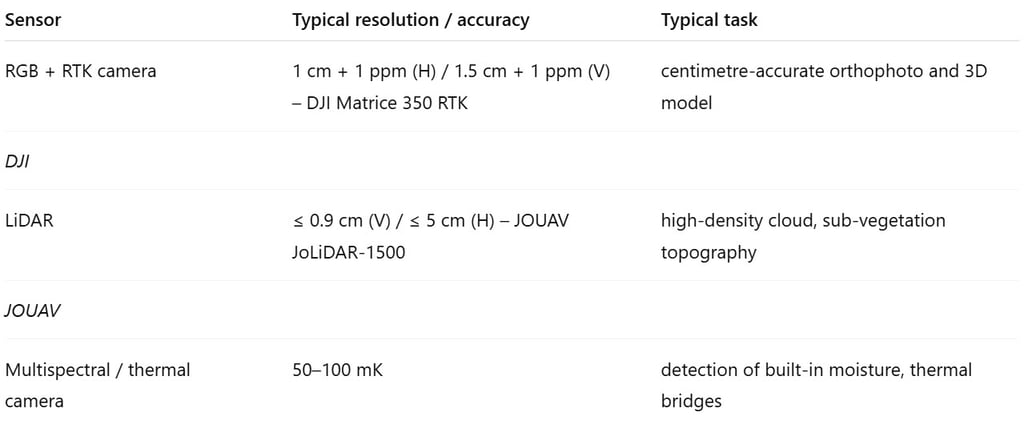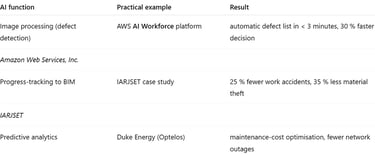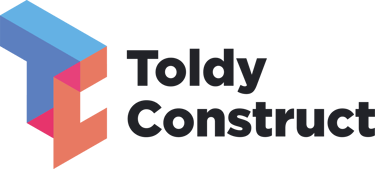Quality and technology IN CONSTRUCTION
delivered with STRAIGHT communication
Quality assurance with modern tools: drones and artificial intelligence in construction supervision
Drones and AI provide faster, more accurate and safer quality control on construction sites. They reduce errors and costs, though require significant investment and data management.
CONSTRUCTIONTRENDPROJECTMANAGEMENTDRONE
Dr. Toldy Gábor - Toldy Construct
5/20/20253 min read


Quality assurance with modern tools: drones and artificial intelligence in construction supervision
Introduction
Construction projects are becoming increasingly complex, and time- and cost-pressure have reached unprecedented levels. While errors consume on average 5–10 % of project costs, digital quality assurance—led by drones and artificial intelligence (AI)—offers a revolutionary answer: fast, precise and safe supervision throughout the entire construction life-cycle.
GlobeNewswire
1. Why did quality assurance need to be digitalised?
Higher speed, less risk – AI-driven drones cover in minutes the same area that ground teams would need hours for, without dangerous heights or tight spaces.
Amazon Web Services, Inc.Real-time intervention – Machine vision immediately signals cracks, moisture or deviation from the plan, thus expensive rework can be prevented early.
IARJSETPredictive maintenance – AI algorithms built on large data sets predict structural problems in advance; at Duke Energy, for example, a drone-AI pair in pilot operation already reduces unexpected failures.
Optelos
2. Drones in construction supervision
2.1 What can modern drones do?


Where is accuracy today?
Photogrammetry + RTK: 1–3 cm horizontal, 2–5 cm vertical accuracy without ground control points.
UAV CoachDrone-LiDAR: up to 0.9 cm vertical deviation even at higher flight altitude.
JOUAV
2.2 Advantages
Near-millimetre measurement: precise alignment to BIM, less rework.
Safety: personnel risk is minimised at heights, depths or dangerous zones.
Speed: surveying a 50-hectare area with LiDAR in < 30 minutes.
Documentability: every flight is retrievable and auditable, so disputes are settled faster.
2.3 Disadvantages
Initial investment: RTK- and LiDAR-capable platform 10–50 k EUR.
Data flood: storing and processing large clouds and 8K videos demands serious IT background.
Regulations: EU and national UAS rules (e.g. BVLOS, data protection) may restrict full autonomy.
3. AI in real-time data processing


Advantages
Automated recognition: cracks > 1 mm can also be filtered.
Real-time alert: instant message to the on-site team.
Learning algorithms: hit accuracy increases with every new flight.
Disadvantages
Data protection: GDPR handling of employees and neighbouring properties.
“Black-box” effect: model explainability is key to sectoral acceptance.
Training need: drone-pilot + AI-operator competence is scarce on the Hungarian market.
4. Integrated workflow (Drone + AI)
Autonomous flight planning – downloading RTK points, route optimisation.
Data collection – RGB, LiDAR, thermal sensors in a single flight.
Edge processing – pre-filtering on the onboard GPU; critical error instant push message.
Cloud AI analysis – comparison with BIM, quantity deviation, safety.
Dashboard & report – visual map, 3D model, KPIs and log export.
According to the Optelos presentation at Utility Analytics Week 2024, thanks to the integrated workflow operations achieved up to 40 % cost saving and significantly greater uptime.
5. Future visions (2025 → 2030)
Full autonomy – BVLOS flight combined with docking stations.
5G + Edge – high-bandwidth live stream, local inference without latency.
Generative AI – automatic correction suggestions via 3D plan-as-built comparison.
Carbon-footprint monitoring – AI calculates the construction CO₂ profile in real time.
6. Summary
Drones and artificial intelligence already enable centimetre-accurate, fast and safe quality assurance in general contracting today. Although the technology is investment- and knowledge-intensive, the drastic reduction of errors and accidents, rapid ROI and premium client experience represent tangible advantage. Whoever takes the step now can forge a competitive edge in tomorrow’s digital construction industry.
Sources
DJI Enterprise – Matrice 350 RTK: Specifications (2024)
UAV Coach – Drone Surveying Guide (2025)
JOUAV – Everything You Need to Know about LiDAR Drone (2024)
AWS Machine Learning Blog – AI Workforce: Using AI and Drones to Simplify Infrastructure Inspections (2025)
GlobeNewswire – Drone Inspection and Monitoring Global Market Report 2024-2030 (2025)
IARJSET – Remote Monitoring of Construction Sites Using AI and Drones (2024)
Optelos – Utility Analytics Week 2024 Recap: Drone Inspection and AI in Utilities (2024)
Construction
With over 20 years of experience in general contracting, our company specializes in the flawless execution of unique, bespoke buildings. Our innovative methods and mindset make us stand out in the market.
Our services
Contacts
company@toldyconsult.hu
+36 30 289 2383
© 2024. All rights reserved.
Our WEBPAGES
www.toldyconsult.hu
